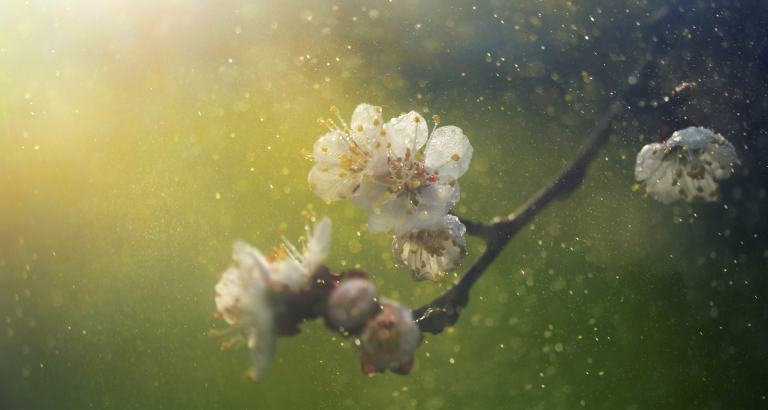Allergy Season is Getting Longer: How Climate Change and Allergies are Connected

It’s pollen season. You know, the stuff that covers your car, gets on your clothes, and makes you sneeze. If you feel like those pesky seasonal allergies are sticking around longer each year, you aren’t wrong. A new study published in the Proceedings of the National Allergy of Sciences confirms that allergy season starts 20 days earlier, is ten days longer, and has 21% more pollen than it did in 1990.
The link between climate change and allergies
Recent research deems climate change the culprit of the intensified allergy season. According to Patrick Kinney, Beverly A. Brown Professor of Urban Health and Sustainability in the Department of Environmental Health at the Boston University School of Public Health, “climate change has added to the typical pollen season, which has serious implications for the many Americans who suffer from hay fever and asthma.”
Unfortunately, those with seasonal allergies aren’t the only ones impacted. Pollen levels are closely tied to respiratory health. A sustained increase of pollen in the air can lead to more viral infections, ER visits, as well as challenges in academic performance among students.
The authors, led by William Anderegg at the University of Utah School of Biological Sciences, stated, “The strong link between warmer weather and pollen seasons provides a crystal-clear example of how climate change is already affecting people’s health across the US.”
Although previous small-scale studies hinted at a link between climate change and allergies, the study is the first to look at pollen trends at a continental scale and associate the trend with climate change. His team compiled measurements from 1990-2018 on 60 pollen count stations, managed by the National Allergy Bureau across the US and Canada.
“Applying statistical methods to the pollen trends in conjunction with nearly two dozen climate models, the researchers found that climate change alone could account for around half of the pollen season lengthening and around 8 percent of the pollen amount increasing.”
When they split the study years into two periods, 1990-2003 and 2003-2018, the researchers found that climate change is a significant contributor to pollen levels increasing each year.
They found that higher concentrations of carbon dioxide and warmer temperatures were causing plants to grow larger, which produced larger flowers, leading to more pollen per flower. While this is great news for the floral industry, it doesn’t help anyone struggling with seasonal allergies.
According to the authors, climate change isn’t something far off into the future. It’s already showing itself with “every spring breath we take.” The biggest question is if people of the world will rise to the challenge or continue to allow human-caused climate change to wreak havoc.




